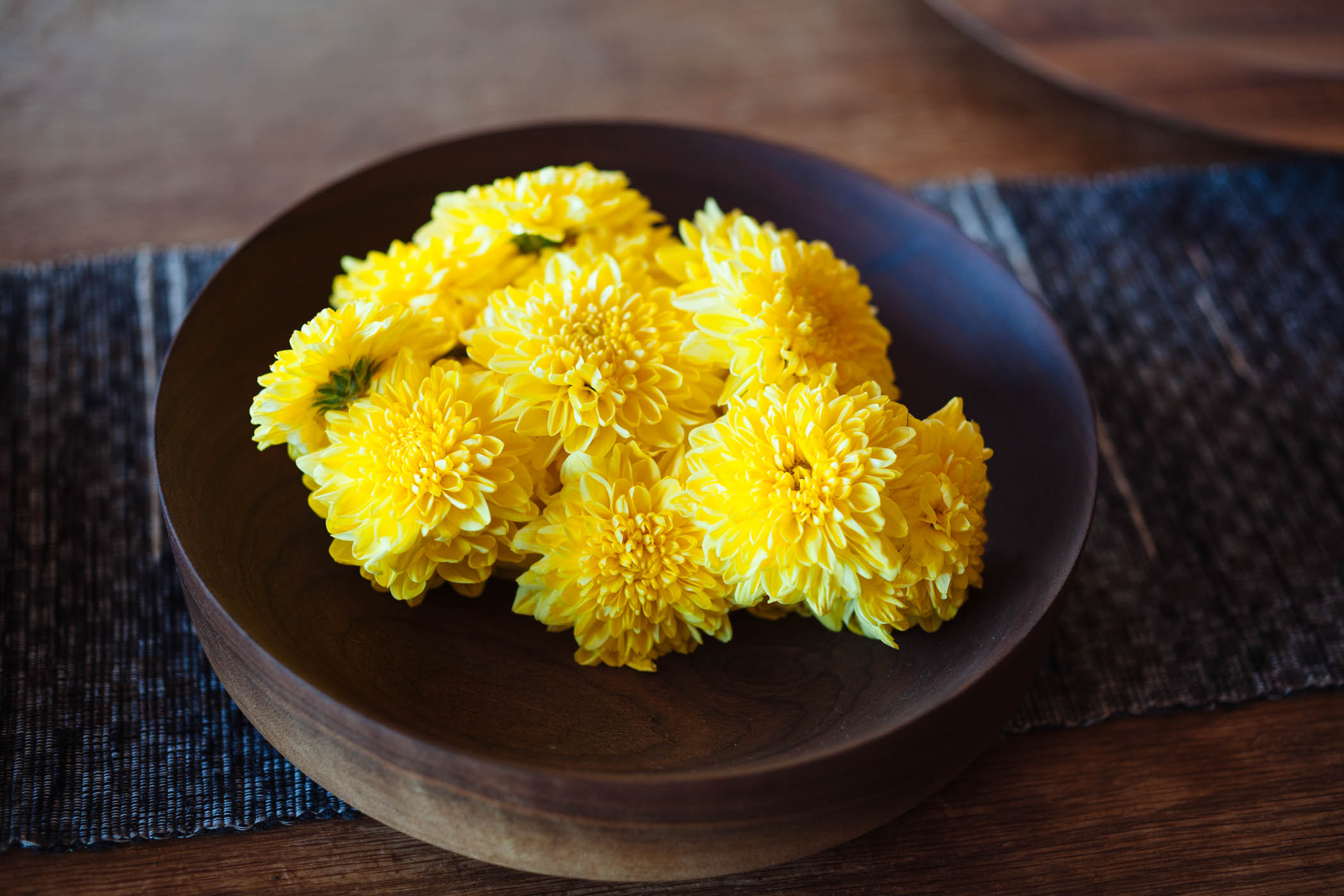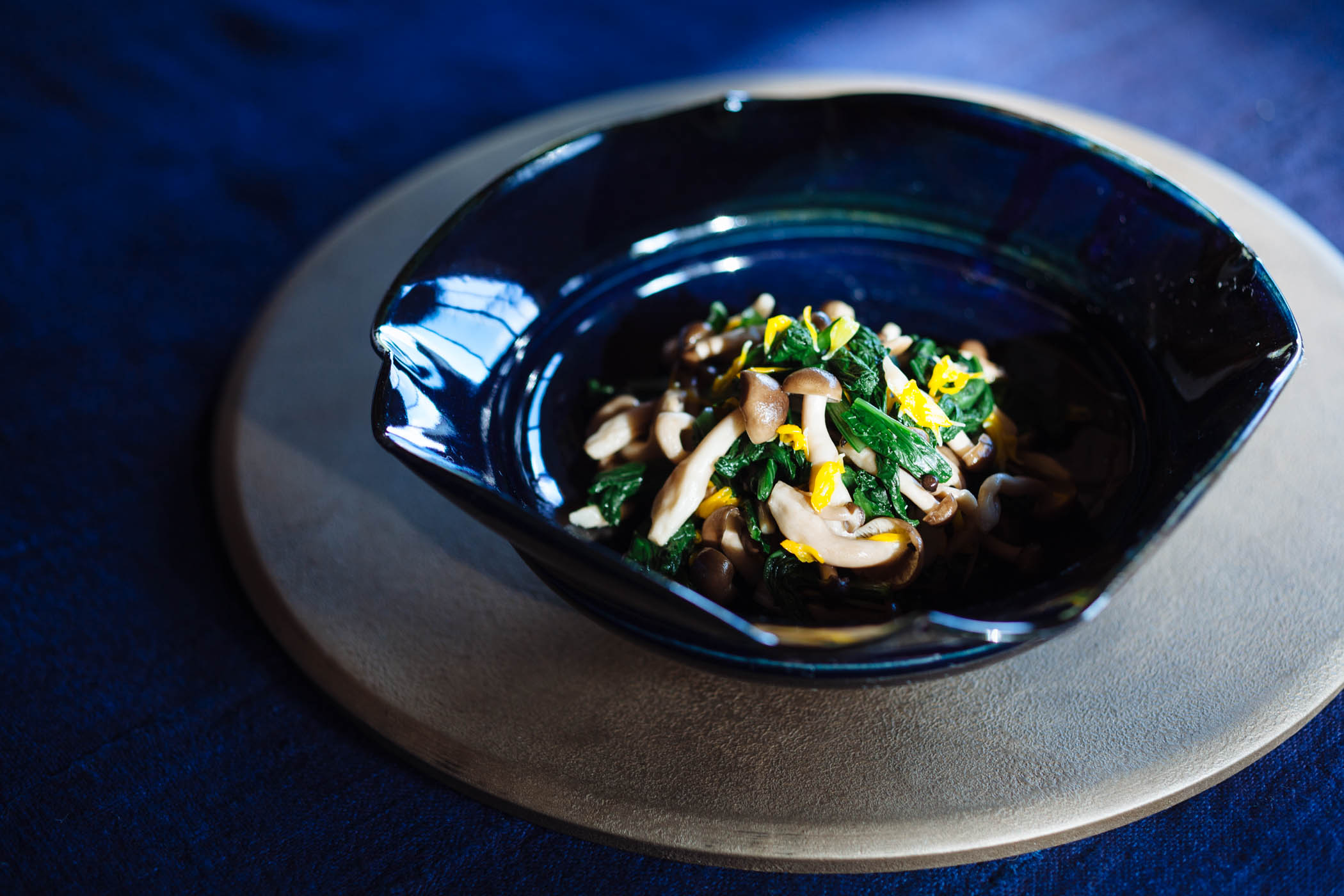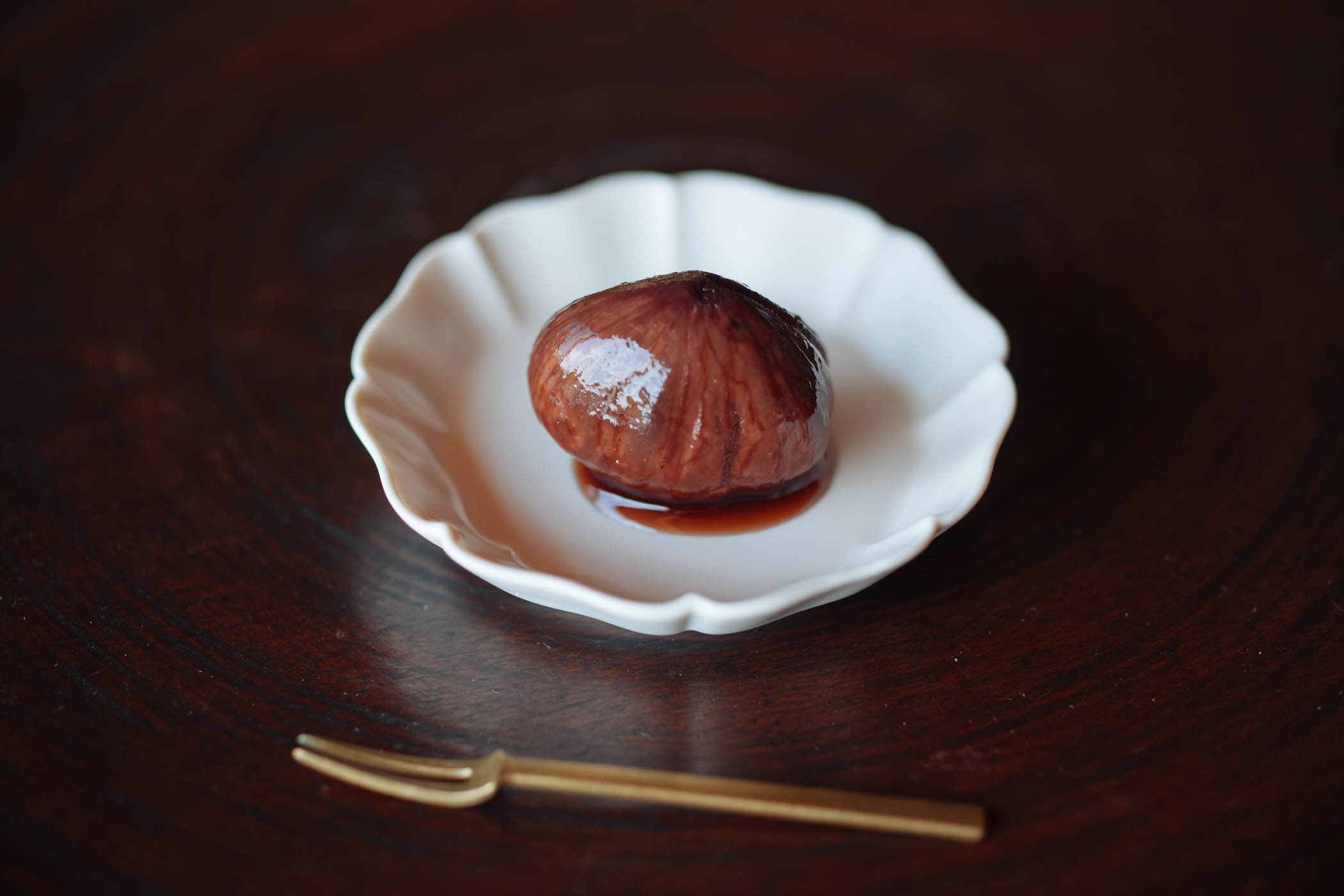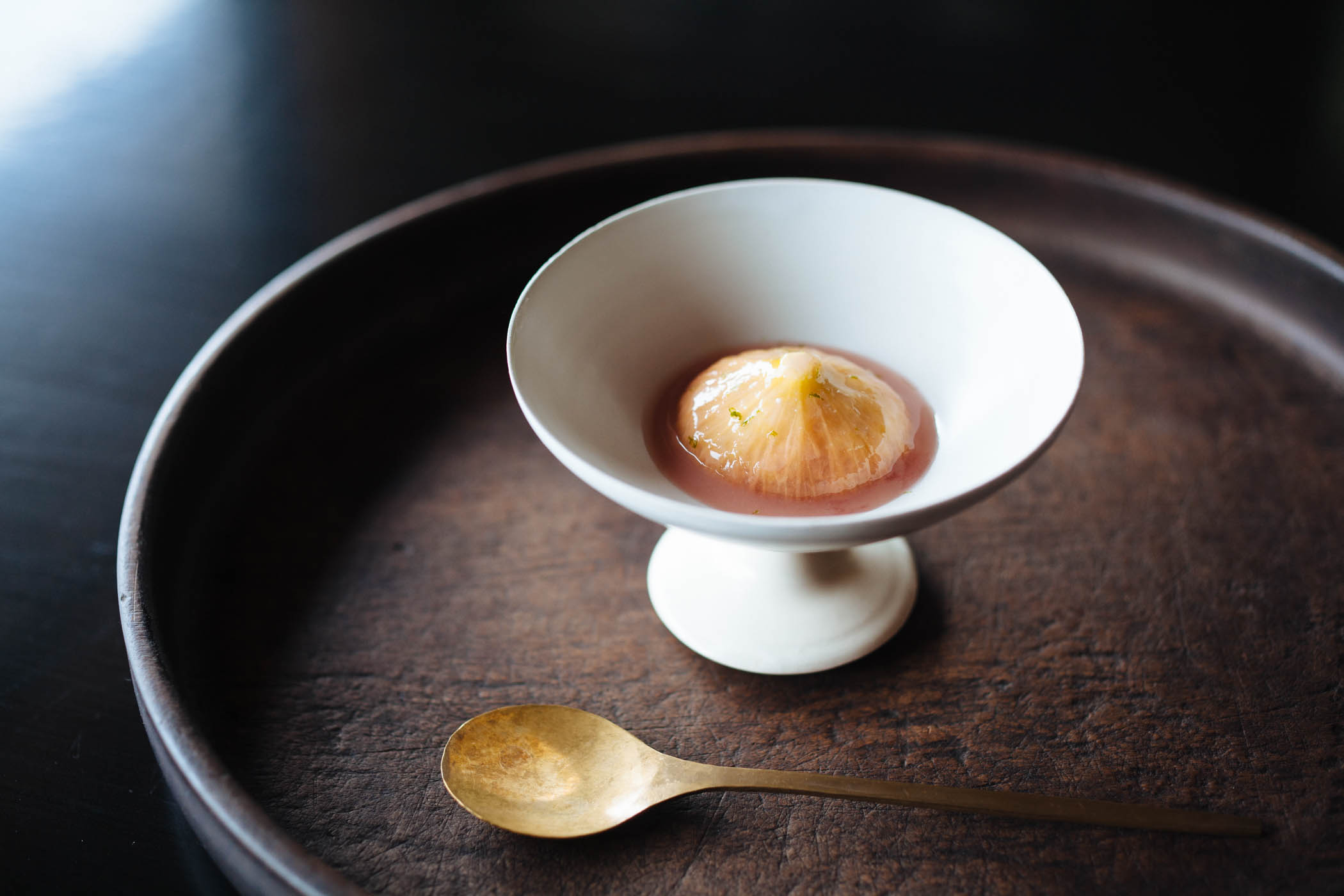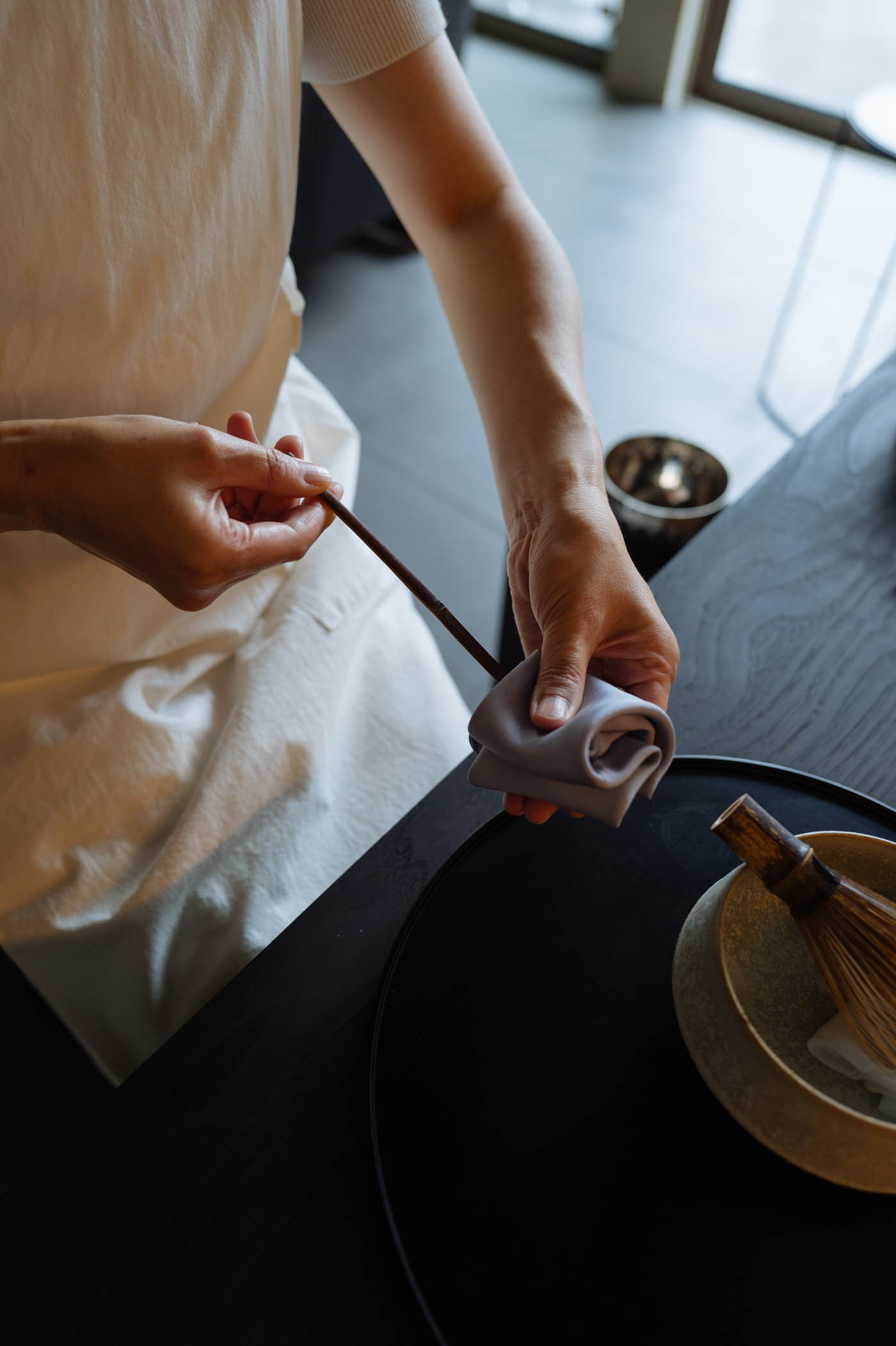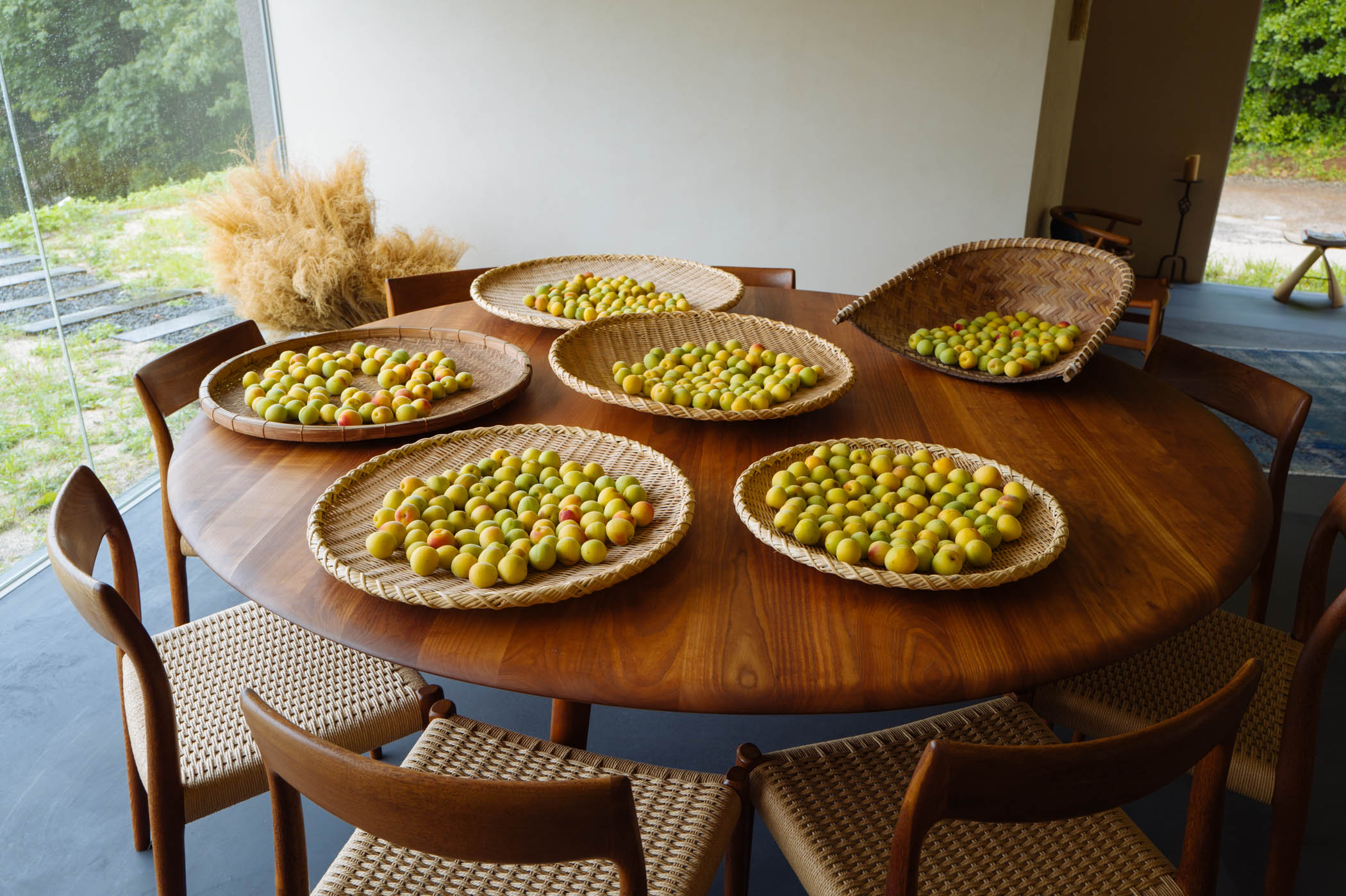Chrysanthemums are revered in Japan, symbols of the imperial family, the season of September, and quiet endurance. But to me, they first recalled the gardens of New England, my first home, where vibrant mums are potted and placed to stave off the gray of late autumn. Now, living in Japan, I feel their deeper resonance: the poise, the precision, the power hidden in their petals.
It was early in my time in Japan, on a trip to Kyoto, that veiled, velvet city, when I learned that chrysanthemum florets were edible. Back then, Kyoto was mythic to me. An ancient capital humming with secrets, where thresholds only opened for the properly introduced. My father-in-law, with his old-world tastes, opened a few of those doors for us.
One autumn evening, we walked a rain-slicked garden path. Drizzle fell soft and steady. Attendants handed us woven straw disks to shield our hair. Beneath our feet, stones glistened. Moss swelled at the edges, plush and saturated, glowing under the amber wash of lantern light. We entered a 400-year-old tearoom and knelt on tatami. I sat in the least honored seat, furthest from the hosts. But I was thrilled. From my corner, I could peer through a narrow opening at the base of the wall. Shoji screens pulled aside, I watched shadows dance on the foliage beyond. Tap, tap, tap — rain punctuated the silence.
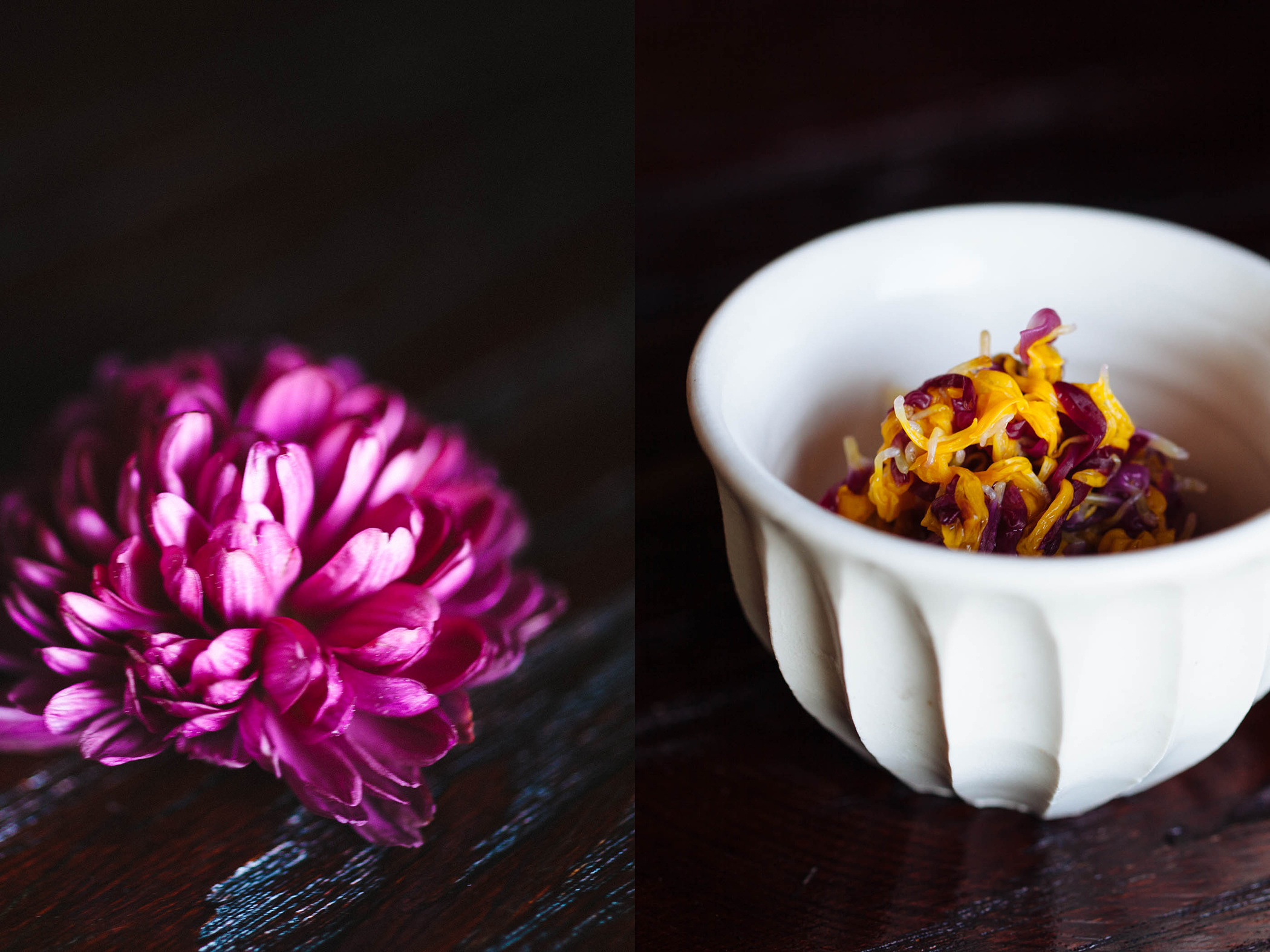
Later, Kuniko brought home bundles of kiku, chrysanthemum, in hues of canary and aubergine. She gently unwrapped them. I watched her hands, weathered and wise, as she plucked each petal with care. When dressed with vinegar as *sunomono*, the florets brighten the table. Blanched and brined, they become elastic between the teeth — a surprising texture, a regal introduction to a meal.
The same vinegar-dressed petals find their way into sautéed mushrooms, wilted greens, and a garnish for sashimi at a time when our appetite turns towards things with depth, edge, and soul. For years, I thought kiku belonged only to Kyoto. But one day, deep in the Karatsu fish market, I discovered otherwise. In the cavernous hall was a single vegetable vendor, a woman who seemed to possess the bounty of an entire archipelago. Hidden beneath her table, she kept treasures. And there, every autumn, I find the blossoms again.
Years of cooking have sharpened my discernment. I now know the dishes that comfort, the ones that command. The humble from the celebratory. And those, like chawanmushi and kiku *sunomono*, that are both elegant but attainable, simple but not simplistic.
Each time I work with kiku, I recall that evening in Kyoto and the quiet intimacy of Kuniko’s kitchen. Her hands, rough with age, moved with grace. She taught me that to cook well is to honor the essence of a thing. To preserve its soul while refining its expression. To transform without erasing. This is not just cooking. It is ritual. It is artistry. It is a kind of bold, sensual reverence.
Because beauty matters. Because attention is power. Because even in times of stillness, we hunger for depth, for texture, for something that burns true.
